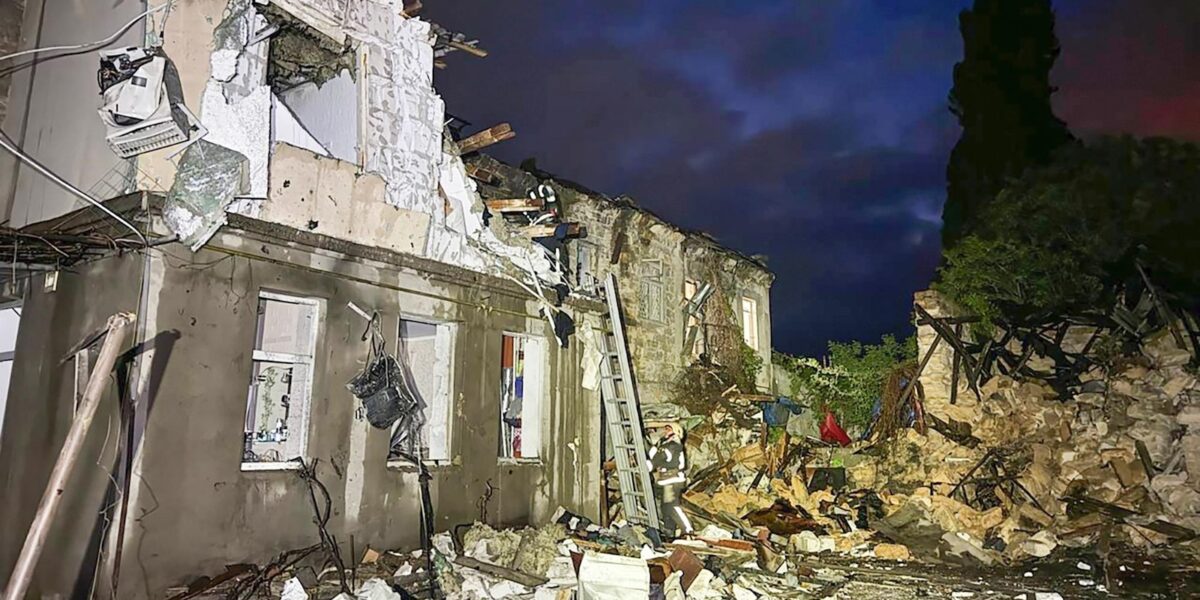WASHINGTON — The Pentagon is poised to send an initial $1 billion package of military aid to Ukraine, U.S. officials said Tuesday as the Senate began debate on long-awaited legislation to fund the weapons Kyiv desperately needs to stall gains being made by Russian forces in the war.
The decision comes after months of frustration, as bitterly divided members of Congress deadlocked over the funding, forcing House Speaker Mike Johnson to cobble together a dramatic bipartisan coalition to pass the bill. The $95 billion foreign aid package including billions for Israel and Taiwan, passed the House on Saturday and the Senate approval was expected either Tuesday or Wednesday.
The votes are the result of weeks of high-voltage debate, including threats from Johnson’s hard right faction to oust him as speaker. About $61 billion of the aid is for Ukraine.
The package includes an array of ammunition, including air defense munitions and large amounts of artillery rounds that are much in demand by Ukrainian forces, as well as armored vehicles and other weapons. The U.S. officials said some of the weapons will be delivered very quickly to the battlefront — at times within days — but it could take longer for other items to arrive. They spoke on condition of anonymity because the initial aid had not yet been publicly announced.
America’s infusion of weapons comes on the heels of an announcement by the U.K. on Tuesday, pledging an additional $620 million in new military supplies for Ukraine, including long-range missiles and four million rounds of ammunition.
The announcement reflects President Joe Biden’s promise Monday in a call with Ukrainian President Volodymyr Zelenskyy saying that the U.S. would send the badly needed air defense weapons once the Senate approved the bill. Zelensky said in a posting on X, formerly Twitter, that Biden also assured him that a coming package of aid would include long-range and artillery capabilities.
The latest tranche of weapons will be provided through presidential drawdown authority, or PDA, which pulls systems and munitions from existing U.S. stockpiles and sends them quickly to the war front. Some of the munitions are already in Europe, so could move within days to Ukrainian forces.
Last week, an array of U.S. leaders described how urgently Ukraine needs the infusion of aid. Without it, said CIA Director Bill Burns, Ukraine could lose the war to Russia by the end of this year. And Defense Secretary Lloyd Austin told House members that conditions on the battlefield were shifting and Russian forces were making incremental gains.
Gen. CQ Brown, chairman of the Joint Chiefs of Staff, bluntly describe the situation to the House Defense Appropriations Subcommittee:, saying Ukraine is facing ” dire battlefield conditions.” Desperate Ukrainian troops rationing or running out of ammunition on the front lines.
During a virtual meeting last Friday of defense ministers in the NATO-Ukraine Council, Austin underscored the need for “immediate, concerted action” on air defense weapons for Kyiv, the Pentagon said. NATO Secretary General Jens Stoltenberg and Zelenskyy attended the meeting, along with other NATO allies.
The U.S. move to finally send the much-needed weapons comes as Pentagon leaders prepare to meet with defense officials from Europe and around the world on Friday to discuss international aid for Ukraine. The gathering – created by Defense Secretary Lloyd Austin and known as the Ukraine Defense Contact Group – has been meeting about monthly for the past two years, but in recent sessions officials have expressed growing consternation over the U.S. gridlock.
More than $20 billion in the aid bill is earmarked to replenish U.S. military stocks that have been depleted because they were sent to Ukraine.
Ever since Russia’s February 2022 invasion, the U.S. has sent more than $44 billion worth of weapons, maintenance, training and spare parts to Ukraine. For the bulk of that time, the aid packages were moving routinely every few weeks. But the money was drying up by the end of the fiscal year on Sept. 30. And by mid-December, the Pentagon said it had run out of money and had to stop sending weapons because – without the funding package stalled in Congress — it could no longer afford to replace them.
The $1 billion package was first reported by Reuters.


